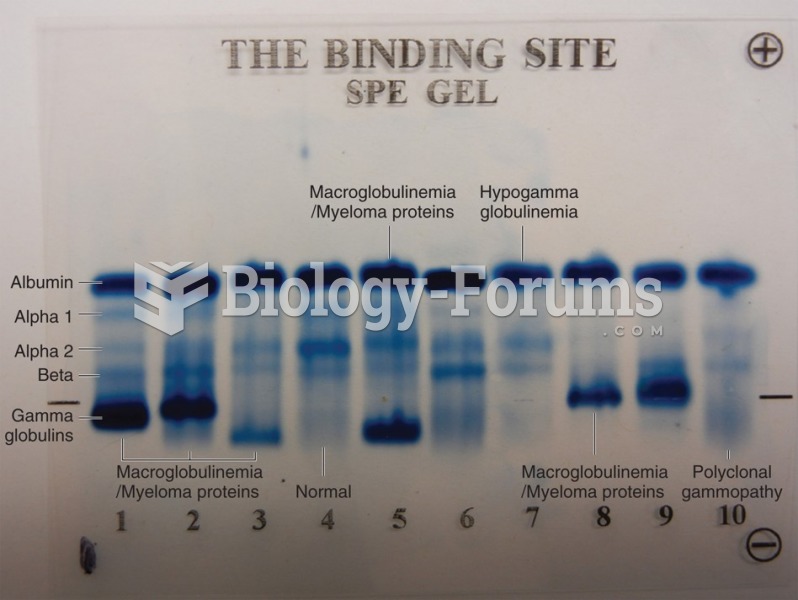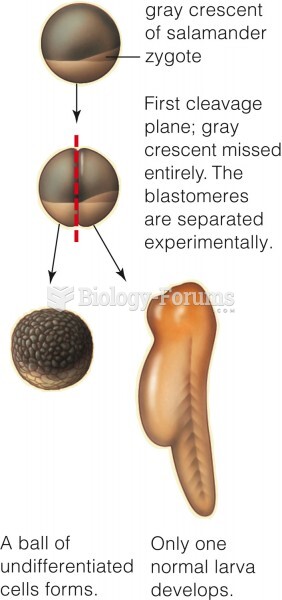|
|
|
The lipid bilayer is made of phospholipids. They are arranged in a double layer because one of their ends is attracted to water while the other is repelled by water.
The human body produces and destroys 15 million blood cells every second.
To maintain good kidney function, you should drink at least 3 quarts of water daily. Water dilutes urine and helps prevent concentrations of salts and minerals that can lead to kidney stone formation. Chronic dehydration is a major contributor to the development of kidney stones.
Excessive alcohol use costs the country approximately $235 billion every year.
The most common childhood diseases include croup, chickenpox, ear infections, flu, pneumonia, ringworm, respiratory syncytial virus, scabies, head lice, and asthma.
 All of the homes in this new neighborhood of Brentwood, California, are for sale, evidence of the co
All of the homes in this new neighborhood of Brentwood, California, are for sale, evidence of the co
 Results of Mendel’s crosses using pea plants. The numbers represent the F2 plants showing a given ...
Results of Mendel’s crosses using pea plants. The numbers represent the F2 plants showing a given ...





